The views expressed in our content reflect individual perspectives and do not represent the authoritative views of the Baha'i Faith.
How can Indigenous and Western approaches to building cohesive, unified communities work together? In this installment of Indigenous Messengers of God, we examine that important question.
Q: Kevin, let’s explore how Indigenous and Western approaches can potentially complement each other and work together in unity. This topic interests me, since my ancestors were among the “settlers,” “colonizers,” “slave-owners,” etc. While I don’t consider myself to be any of these, it’s a sad and burdensome legacy, for which I feel a kind of vicarious, shared guilt. That said, I’d like to know what the best way forward may be, in your view as a native person. As always, it’s an honor and a privilege to work with you.
Fairly recently, I’ve come to understand that our way of working together may have a name – “Two-Eyed Seeing” – although we weren’t conscious of it until you and I started exploring this approach together. “Two-Eyed Seeing” or Sesatu’k Etuaptmumk, first proposed by Mi’kmaw Elder Albert Marshall of Eskasoni First Nation in Unama’ki, Cape Breton, Nova Scotia, seeks to integrate Indigenous and Western knowledges by taking the best that the two worlds have to offer.
RELATED: Encouraging Indigenous Land and Spiritual Acknowledgements
So let’s talk about the process of decolonizing, and how “Two-Eyed Seeing” can provide a path forward.
A: Yes, it’s a very worthy subject to discuss. Here’s a good definition of Two-Eyed Seeing and decolonization from a recent journal article:
Decolonization is a process where Indigenous peoples, whose communities were severely affected by colonial expansion, genocide, and cultural assimilation, recover their power by reclaiming their Indigeneity. The process of decolonization requires critically evaluated methodologies as well as ethically and culturally acceptable approaches to the study of issues involving Indigenous peoples. …
In this process, there is a commitment to Indigenous peoples and their right to self-determination, not only from an economic or political viewpoint but also with respect to research. …
The search for a respectful research paradigm for this project led to the Two-Eyed Seeing Indigenous decolonizing methodology which provides an inclusive philosophical, theoretical, and methodological approach. Two-Eyed Seeing is the blending of Aboriginal and Western research methods, knowledge translation, and program development. Two-Eyed Seeing recognizes Indigenous knowledge as a distinct epistemological system that can exist side by side with mainstream (Western) science. … Two-Eyed Seeing encourages Aboriginal peoples, health-care providers, and researchers to develop a relationship of mutual cultural respect, wherein the benefits of both worldviews are acknowledged as beneficial in the healing processes.
Applying Two-Eyed Seeing to research methodology requires a keen understanding of Indigenous epistemologies, which embody the cosmologies, values, cultural beliefs, and relationships that can vary from one community to another. In most Indigenous epistemologies, knowledge is acquired through revelation, such as dreams, visions, and intuition, and passed down by Elders and knowledge keepers through teachings. Knowledge is also regarded as spiritual, which is understood as coming from the spirit world and ancestors. This spiritual knowledge cannot be observed by physical means; therefore, it cannot be measured or quantified.
To oversimplify, “Two-Eyed Seeing,” in my limited understanding of it, is basically working together, with respect and reciprocity, with a shared goal of including, integrating, and ultimately benefiting from Indigenous perspectives, knowledge, wisdom and insights. For me, it also reflects the larger principle of the oneness of humanity promulgated by Baha’u’llah and expressed here in his prayer:
Ever since the day Thou didst create me at Thy bidding, O my God, and didst arouse me through the gentle winds of Thy tender mercies, I have refused to turn to any one except Thee, and have, through the power of Thy sovereignty and Thy might, arisen to face Thine enemies, and have summoned all mankind unto the shores of the ocean of Thy oneness and the heaven of Thine all-glorious unity.
Q: Definitely. So let me ask you this: How can “Two-Eyed Seeing” assist in the process of “community building,” which Baha’is engage in worldwide, in order to be of service to their grassroots neighborhoods at local levels, wherever they live, in an Indigenous context?
A: In the Lakota language, we have a word that can be translated as “decolonize” = kilákȟota, which means “return to being a human being.” In pre-reservation times it, kilákȟota referred to those who were negatively changed and then, through some transformative process, were restored to being a civilized, cultured human being. In current usage, kilákȟota refers to those who, after being assimilated into the dominant material culture, are coming back to the Indigenous ways. From another perspective it can mean much more.
According to some accounts, White Buffalo Calf Woman was commissioned by Tȟuŋkášila, the Grandfather – the one Who authorized all of the divine educators to appear – to turn to Him and receive a portion of His love through His teachings. Upon fulfilling Her commission and delivering His teachings, some say that, in recognition of receiving this divine gift, She bestowed the new name, “Lakȟóta.” In this sense, “kilákȟota” could mean going back to the ways of the Grandfather – the One Who sent all the holy ones. This would certainly contain more spiritual significance than the English term “de-colonize.”
Yes, we need “Two-Eyed Seeing.” But in order to fully become “kilákȟota,” we must also activate our heavenly endowed capacities, our eagle wings, in order to soar above and beyond all that delimits us.
Q: In the New Lakota Dictionary, which you just introduced me to, I see the following definition of “kilákȟota”:
1. To become Lakota again, return to traditional ways; to adopt the Lakota ways. Usage: said of urban Indians who return to the reservation just for the ceremonial seasons or of a people who had been attracted to the white man’s lifestyle but returned to Lakota traditions; 3rd person only; today also of other people who adopt Lakota ways.
2. To become a human again (as a character in a myth who had been transformed).
It’s probably far easier for you to engage in “Two-Eyed Seeing” than me, because you live in both Indigenous and non-Indigenous worlds simultaneously. I have never been privileged to experience Indigenous ways myself. That said, whatever I understand about Indigenous perspectives has added a new dimension to my worldview. A third dimension, as it were, is my Baha’i perspective, which you and I share.
Let’s consider the Lakota word for “seeing”: tuŋwÁŋ, which means “to open the eyes, to use the eyes in the sense of not being blind, to be able to see, to look about.,” and also the Lakota word for “spiritual,” wakȟáŋ, which means: 1. To be endowed with spiritual power, be sacred, holy, spiritual.
2. To be mysterious, incomprehensible; magical.
So “Two-Eyed Seeing” involves not only a bicameral cultural interaction of Indigenous and non-Indigenous perspectives, but also, while soaring on “our eagle wings,” as you say, induces a transcendent vision of “spiritual seeing” as well? If so, how can this, for lack of a better term, “Three-Eyed Seeing” work in a community-building context? Is it possible for both Indigenous and non-Indigenous cultures to work together “for the betterment of the world,” as Baha’u’llah says?
RELATED: How Did Indigenous Americans Get There?
A: I connect the “third eye” with the “inner eye,” or self-knowledge. This is needed, of course. But what is really required is the activation of our collective “eagleness.”
The eagle symbolizes loftiness, nobility and the ascendant nature of the human spirit. Now is the time to enable our “wings” to be uplifted and propelled by the vivifying, inspiring, and empowering breezes released through the new global messenger — Baha’u’llah — to soar to the realm that transcends race, gender, ethnicity, nationality, culture, language, or anything else that divides, diminishes and delimits us.
We are all now summoned by the Baha’i teachings to see each and all as legitimate heirs to the collective riches of the human heritage — both spiritual and material. In this series of articles, for example, it has been a privilege to explore the spiritual heritage of the Western half of the planet.
So, yes, not only is it possible for both Indigenous and non-Indigenous cultures to work together “for the betterment of the world,” as Baha’u’llah says, it is necessary for the ultimate well-being of the whole planet.
The two “eyes,” when seeing together, add perspective and depth to our collective vision. These two worldviews enrich and complete each other. This is why I think that Abdu’l-Baha, in his Tablets of the Divine Plan, stressed the importance of Indigenous perspectives as the missing puzzle-piece in the fulfillment of the Creator’s grand design and purpose in creating and nurturing Grandmother Earth, and expressing it in the form of this remarkable prophecy:
Attach great importance to the indigenous population of America. … Likewise, these Indians, should they be educated and guided, there can be no doubt that they will become so illumined as to enlighten the whole world.




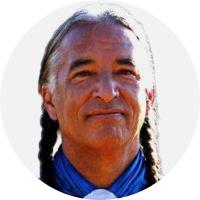




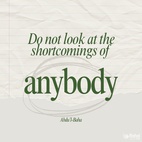
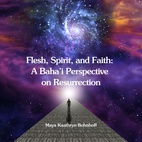
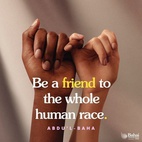
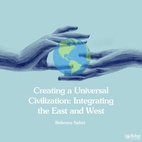

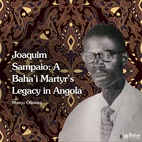
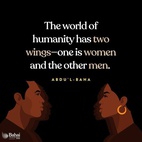


Comments
Sign in or create an account
Continue with Googleor